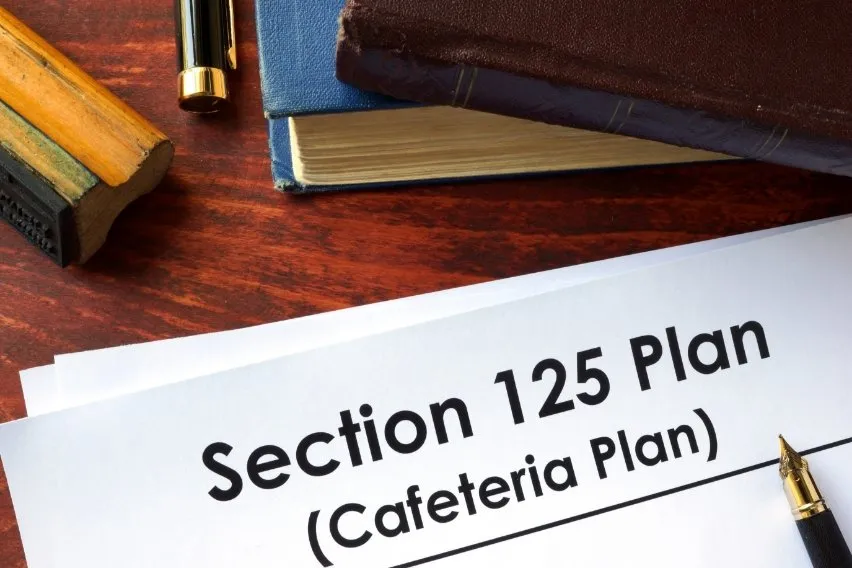Payroll Audit: What It Is & How To Conduct It

Running a robust payroll process is a key responsibility for all employers. Employees deserve to get paid correctly and on time. Businesses also need to be sure they are always tax compliant.
Regular payroll audits play a big part in ensuring payroll is effective and efficient. So, what’s the best way to conduct one? Find out as we give you the lowdown on what payroll audits are and how to carry them out.
Table of Contents
Benefits of Conducting a Payroll Audit
How to Conduct an Effective Payroll Audit
What Is a Payroll Audit?
A payroll audit is a breakdown of a company’s payroll processes. It looks at aspects of a company’s payroll such as the number of wages, employee pay rates, active employees, and tax withholdings.
Businesses should carry out a payroll audit annually at least. This helps to check their processes are accurate and legally compliant.

When Should Payroll Audits Take Place?
There are specific circumstances when it’s wise to carry out a payroll audit. This could happen if an organization has restructured or undergone a merger. It may also occur if a business has radically changed the size and scope of its workforce.
Someone inside a business typically makes the payroll audit report. Performing internal audits mitigates the chance of external audits further down the line.
On completion of the payroll audit, it’s possible to make retrospective changes. If there’s been an error, for example, you may have to offer retroactive pay to an employee or more tax payments to the IRS.
Benefits of Conducting a Payroll Audit
Regularly carrying out a payroll audit will help:
- Stop payroll fraud by spotting ghost employees or mismarked time cards
- Enable the correction of manual errors made when putting numbers into a system
- Find calculation mistakes when performing payroll by hand
- Draw your attention to the need to factor raises for certain employees
- Take off terminated employees from the payroll
- Check tax withholdings are accurate
- Accurately account for paid or unpaid time off
- Make a comparison between hours paid and when employees clocked in
- Ensure compliance with relevant employment laws
If you don’t carry out the payroll audit process, you are in effect working in the dark. As a result, a company may be spending more on wages than it needs to. It may also be inadvertently breaking employment laws or remitting tax amounts that are incorrect. Some companies will enlist the help of a 3rd party to help them with their payroll audit.
How to Conduct an Effective Payroll Audit
Attention to detail and being thorough are key to an effective payroll audit. It’s important to stick to a clear, standard process. It will also help identify areas of the business that have room for improvement. Use the following payroll audit checklist.
Verify Employee List
You should check the list of employees on your payroll. Make sure that all of these employees were working for the organization during the given time period. If there are more workers listed on the payroll than you know you had working for you, there is likely to be a problem. Payroll fraud schemes can involve ghost employees.
It’s not unheard of for corrupt payroll administrators to put fake employees on the payroll. They might do this by using false names or repurposing a former employee’s payroll accounts. They’d then siphon off the wages for themselves.
It’s also possible they may have forgotten to remove a terminated employee from the payroll. However, checking the list of employees is correct will help prevent payroll fraud.
Verify Pay Rates and Hours Worked
Take an in-depth look at each employee’s pay rate to ensure you paid the worker the right amount. The pay rate needs to be up-to-date and match the employee’s record. If the employee received a raise or salary reduction, double-check that the pay rate changed on the correct date.
Examine the hours all employees worked. You need to be sure that these match the organization’s attendance records. Your payroll system needs to be robust enough to weed out discrepancies. Check that your employees received the relevant overtime pay.
Verify Variable Payments
Variable payments should have proof of authorization attached to them. Your payroll reports should separate variable pay from regular wages and salaries. Check these payroll details to ensure the appropriate member of staff signed them correctly.
Here are some examples of variable pay:
- Bonuses and commissions
- Profit-sharing
- Shift differentials
Inspect Off-Cycle Payroll
Add together the number of payroll runs in the auditing period. Compare these to the number of payroll runs that should have happened.
For instance, an organization that observes a semi-monthly pay period would conduct 24 payroll runs annually. If there were 25 payroll runs, you need to find out what happened.
There may be a very good reason. Many companies process variable payments separately from regular payroll. That would create an extra payroll run, known as “off-cycle payroll.”
Accidents can also happen and lead to payroll errors. A payroll administrator could for example inadvertently run payroll twice for one pay period.
Perform a Payroll Reconciliation
Compare the findings you make about your payroll with other records. You must check that the totals match. When there are discrepancies, dig deeper to find out what’s causing the issue.
You should make a comparison of your payroll records with your organization’s general ledger. To achieve reconciliation, the payroll expenses in the ledger should tally with your payroll audit findings.
You’ll have to reconcile your payroll records with your bank statements. It’s worth considering having a separate payroll account to simplify bank reconciliation. Additionally, regularly reviewing your payroll ledger, which tracks all payroll transactions, can help ensure alignment with both the general ledger and your audit findings, making the reconciliation process smoother.
Reconcile Internal Payroll Records with Tax Forms
Your work is not over once you’ve checked your payroll records are accurate. You’ll then need to ensure they match the contents reported on employment tax forms 940 and 941.
Bear in mind that different states have their own versions of these forms. These are for reporting income tax withholding and state-level taxes.
Review Outstanding Tax Liabilities
Most payroll software will make outstanding tax liability reports. These will list any tax payments that it was unable to make on your behalf.
Payroll software can fail to make tax payments for all sorts of reasons. It could be that when you begin paying an employee who resides in a new state, you have to get a unique state-specific tax ID number.
Remember that you and your business are ultimately responsible for resolving these kinds of issues. You may need the help of an accountant.
Improve Payroll Processing
Implementing new internal controls will make life easier. It should become simpler to gather the necessary documentation and make fewer mistakes during the year.
Here are some typical tasks that are often ripe for improvement:
- Timesheet approvals
- Bonus authorizations
- Limiting access to payroll records
Compliance with Labor and Recordkeeping Laws
You should always be across the latest rules on the federal Department of Labor and state labor department websites. You’ll find updates on overtime laws, minimum wage changes, and payroll recordkeeping policies. Failing to comply with labor laws is unfair to your employees and could cost your business money.

Key Takeaways
Payroll audits are an essential administrative task for businesses with several employees. They help ensure workers get paid correctly and root out potential fraud.
Payroll audits typically get carried out annually. They can however happen whenever a business experiences a major change in circumstances. These kinds of audit help keep companies compliant with employment law and tax withholdings.
There are a number of procedures needed to conduct an effective payroll audit. These include verifying employee numbers, checking pay rates, and reconciling internal payroll records.
FAQs on Payroll Audits
What Triggers a Payroll Audit?
A payroll audit can happen for a number of reasons. Typically, it’s a regular annual administrative procedure. A business may though need to conduct an audit if the IRS claims there are serious failures with tax withholdings. Suspicion of fraud or a claim by an employee of unfair pay practices could also trigger an audit.
Can an Employee Request a Payroll Audit?
If a worker believes they’ve discovered a serious mistake in their wages or rate of pay, they can request a payroll audit. There would generally need to be a good reason for a business to agree to.the request.
What Do Payroll Auditors Look For?
Payroll auditors will be checking for reconciliation. This would be between the payroll and other external reports such as bank statements. They will want to ensure employees have been getting paid correctly.
They will want to make sure a business is compliant with labor laws and tax withholding. They’ll also be on the lookout for instances of fraud.
RELATED ARTICLES


 Payroll for Nonprofits: Working Process & Benefits
Payroll for Nonprofits: Working Process & Benefits What is an Applicable Large Employer (ALE)?
What is an Applicable Large Employer (ALE)? 8 Best Payroll Software for Restaurants in 2025
8 Best Payroll Software for Restaurants in 2025 Payroll for Churches: Top 7 Payroll Software for Churches
Payroll for Churches: Top 7 Payroll Software for Churches Section 125 (Or Cafeteria) Plan: Types and Benefits
Section 125 (Or Cafeteria) Plan: Types and Benefits Top 8 Payroll Software for Accountants
Top 8 Payroll Software for Accountants